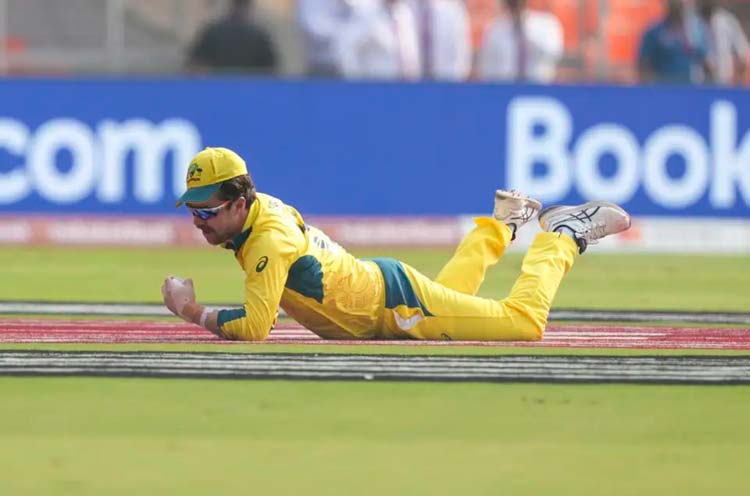What Sri Lanka can learn from Australia’s World Cup campaign – By Rex Clementine
Australia’s fielding was one key point as they beat India in the World Cup final. Travis Head’s stunning diving catch to dismiss Rohit Sharma was one of the turning points in the game.
Source : island
It was a fabulous night indeed in Ahmedabad as Australia defied all expectations and beat hosts and favourites India in the grand final of the sport’s showpiece event last Sunday.
India was a team that stormed through to the finals with an unbeaten record beating several teams by big margins. Never were India tested in the league or knockout stage. Australia, meanwhile, huffed and puffed, lost their opening two fixtures, nearly were beaten by Afghanistan and almost blew it against South Africa in the semi-final. But when it mattered, in front of a full house at the world’s largest sports stadium, they made an impact.
What can we learn from Australia’s triumph? Well, quite a lot.
How much of a difference do you think Australia’s fielding made in the final? Massive. When Rohit Sharma was batting, the pitch looked to be good for a total in excess of 300. But once Rohit was dismissed, most batters struggled for timing. Rohit is that kind of a player that his batting is effortless, but for the rest it was quite a toil. In fact, after Rohit was dismissed, India hit only five boundaries in 40 overs. This was some fielding effort by the Aussies.
Everyone is talking about Travis Head’s batting, but what about his fielding. The stunning catch that he pulled off sprinting backwards and putting the dive in was marvelous to watch and priceless for the Aussies as Rohit was dismissed.
When was the last time a Sri Lankan has pulled off such a catch? When was the last time a Sri Lankan managed a direct hit?
Then take the case of David Warner. He alone would have cut off some 20 runs on the field manning the deep mid-wicket boundary; he sprints so hard, dives and does everything. It’s not just the runs that Warner cuts off, but he upsets the batsmen’s rhythm as they are unable to convert two’s into three and find the boundary frequently.
Someone like Charith Asalanka for the young player he is the efforts he puts in on the field is well below par. A ruthless chief selector like Guy de Alwis would have dropped him from the side and asked him to work on his fielding and come back to the side. How much we miss men like Guy, who would not tolerate half-hearted efforts.
Sri Lanka managed just two wins in the World Cup and they could have done far better if their fielding was sharp. Dropping 16 catches in a tournament is atrocious and one is surprised that how the Fielding Coach has survived this long.
There are enough men capable of raising the team’s fielding standards. It’s just that some of our legends who are in key positions are obsessed with what foreign coaches have to offer. Or maybe that these legends are so loyal to Perera Gardens and carry out all instructions passed on from there and care little for the interests of Maitland Place.
Having watched the team train during the World Cup, we can come to the conclusion that the Sri Lankan team’s fielding drills are outdated. These are the same drills that Mr. Ranjit Fernando used to do more than 30 years ago.
The other key aspect from Australia’s win that you can learn from is the belief in the players whom they had backed. Man of the Match Travis Head was named in the squad despite having a broken left hand. In fact, Head did not take part in Australia’s first five games of the World Cup.
However, when it mattered most, he made it count winning Man of the Match awards in the semi-final and the final. It was a huge gamble by Australia to play the first half of their campaign with 14 players, but it was a gamble worth taking for wise Head turned out to be a match winner when the chips were down. We have much to learn from Australia.








